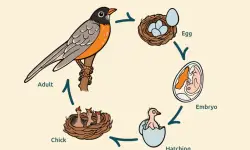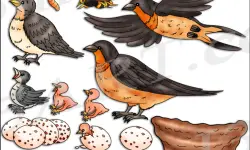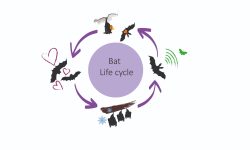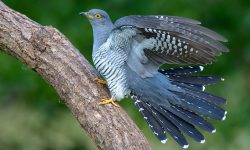The blue jay is one of the most iconic birds in North America, recognized for its striking blue coloration, intelligent behavior, and loud calls. But when it comes to identifying a female blue jay, things can become a bit more challenging. Unlike many other bird species, where males and females display significant visual differences, male and female blue jays look remarkably similar.
This article explores how to identify a female blue jay, her unique traits, nesting habits, vocalizations, and role in the bird community.
Understanding Blue Jays: An Overview
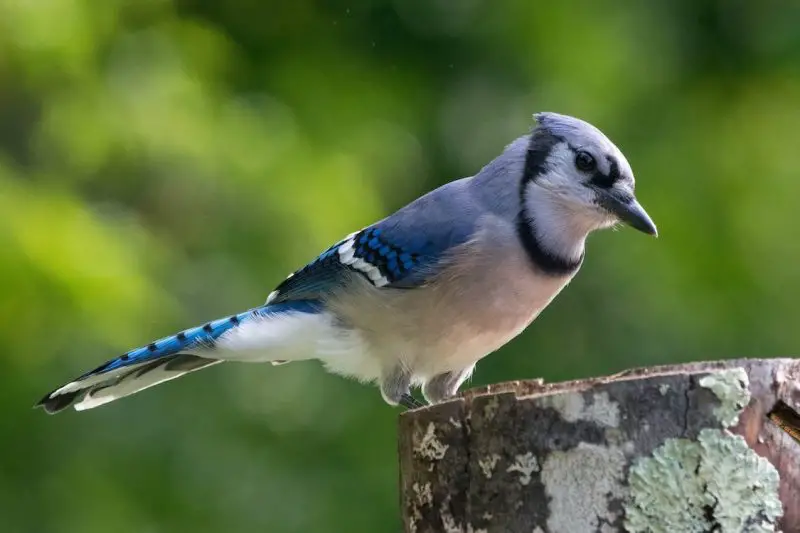
Blue jays (Cyanocitta cristata) belong to the Corvidae family, which includes crows, ravens, and magpies. Native to eastern and central North America, blue jays are highly adaptable and intelligent birds often seen in woodlands, suburbs, and backyards. They are known for their vibrant blue, white, and black plumage, expressive calls, and complex social behaviors.
Where Are Blue Jays Found?
Blue jays are year-round residents in much of their range. They are most commonly found in deciduous and mixed forests, especially near oak trees, which provide their favorite food: acorns. However, they are also frequently spotted in city parks, gardens, and bird feeders. Their adaptability makes them one of the most recognized and widespread birds in the eastern half of North America.
Physical Appearance of Blue Jays
Both male and female blue jays have similar appearances: a bright blue back, wings, and tail with black barring, a white face and underparts, and a distinctive black “necklace” or collar. They also have a pronounced crest on their head, which can be raised or lowered depending on their mood.
How to Tell a Female Blue Jay from a Male
Similarities in Appearance
Male and female blue jays are monomorphic, meaning they share the same coloration and size, making it difficult to distinguish between them based on physical appearance alone. This trait is uncommon among birds, as many species exhibit sexual dimorphism, where males are typically more colorful or larger.
Subtle Behavioral Clues
Despite the physical similarities, there are some behavioral cues that can help you identify a female blue jay:
- Nesting behavior: Females are the primary incubators of eggs. During breeding season, the female will spend a lot of time in the nest, especially from April to July.
- Male feeding behavior: Males often bring food to the females while they incubate eggs. Observing this behavior at a nest can help identify the female.
- Vocal patterns: While both sexes are vocal, females may call more frequently from the nest, particularly with soft contact calls or alarm calls when disturbed.
DNA or Close Observation
In scientific settings, determining a blue jay’s sex often requires DNA testing or examination of the bird’s reproductive organs. However, in the wild, behavior during the breeding season remains the most reliable way to distinguish between male and female blue jays.
Unique Traits of the Female Blue Jay
Role in Breeding and Nesting
One of the most distinctive roles of the female blue jay is her participation in nesting. The female is the sole incubator of the eggs and also broods the young chicks for the first few days after hatching. She constructs the nest, usually in the crook of a tree branch, using twigs, bark, and grass.
The typical clutch consists of 3 to 7 eggs, which are pale blue or light brown with darker speckles. Incubation lasts about 16 to 18 days, and during this time, the male provides food and guards the nesting territory.
Feeding and Raising the Young
After the eggs hatch, both parents participate in feeding the nestlings. The female will stay in the nest for the first few days to keep the chicks warm and safe, while the male continues to provide food. As the nestlings grow, the female joins the male in foraging and feeding the young.
Vocal Communication
Female blue jays use a variety of vocalizations to communicate with their mate and young. While not as aggressive in vocal output as some males, females produce contact calls, soft chirps, and alarm calls to warn of potential predators. These vocalizations play an essential role in maintaining family bonds and ensuring the safety of the nest.
Behavior and Social Structure
Social Bonds and Mating
Blue jays are monogamous and form long-term pair bonds. A bonded pair will stay together throughout the year and return to the same nesting area each breeding season. Courtship begins in early spring, with males performing displays such as bowing, hopping, and vocalizing to attract a mate.
Territory Defense
Both male and female blue jays are highly territorial during the breeding season. They will aggressively chase away intruders, including other birds, squirrels, and sometimes even humans. The female helps defend the nesting territory and will become especially vocal and protective when her young are threatened.
Flocking and Winter Behavior
Outside of the breeding season, blue jays may form small flocks for foraging and protection. Females and males often participate equally in these flocks, traveling together in search of food. Migration patterns vary among individuals, with some birds remaining in the same location year-round and others migrating short distances.
Differences Between Male and Female Blue Jays in the Wild
Size and Plumage
There is no significant size or color difference between male and female blue jays. Both sexes measure approximately 9 to 12 inches in length with a wingspan of 13 to 17 inches. Their plumage is equally vibrant, and both sexes display the same black, white, and blue patterns.
Behavioral Differences
The most noticeable difference lies in behavior during the nesting season. Female blue jays are more likely to be seen sitting quietly in a nest or calling softly, while males are observed gathering food and being more active around the nest.
Outside of the nesting season, behavioral differences are minimal. Both sexes participate in caching food, defending territories, and vocalizing.
Blue Jay Intelligence and Memory
Blue jays are among the most intelligent birds in North America. They are known for their excellent memory, problem-solving abilities, and complex communication skills.
Food Caching
Blue jays, including females, engage in food caching behavior. They collect and store food like acorns, nuts, and seeds in various hiding spots to retrieve later during times of scarcity. This caching behavior contributes to forest regeneration, as forgotten seeds often sprout into new trees.
Tool Use and Mimicry
While not as famous for tool use as crows or ravens, blue jays have been observed using sticks to probe for food. They are also skilled mimics, capable of imitating hawk calls to scare away other birds or predators. Both males and females display this behavior, indicating high levels of cognitive function across the species.
What to Look for When Observing a Female Blue Jay
Nesting Behavior
During the spring and early summer, you are most likely to spot a female blue jay near her nest. Look for signs like a blue jay sitting in a well-hidden nest or receiving food from a male. These are strong indicators of her identity.
Vocal Cues
Listen for soft contact calls, especially in nesting areas. The female often uses a lower volume call to communicate with her mate or chicks.
Physical Clues (When Possible)
If observing a blue jay up close (such as at a bird feeder), check for any behavioral clues. A female may appear more reserved or cautious, especially when feeding near her nest.
Conservation Status and Human Interaction
Blue Jay Population
Blue jays are currently listed as a species of Least Concern by the IUCN. Their population is stable, though habitat loss and fragmentation remain ongoing challenges. Urban environments, however, have provided new opportunities for blue jays to thrive.
Helping Blue Jays Thrive
If you want to support blue jays, including females during the nesting season, consider planting native trees like oaks that provide acorns. Providing a bird bath and avoiding pesticides can also make your yard more attractive and safe for these birds.
Bird Feeder Tips
Blue jays enjoy peanuts (in the shell), sunflower seeds, and suet. To encourage a family of blue jays to visit regularly, place feeders near trees or shrubs for cover. Observing a male and female pair at a feeder during breeding season can give you valuable insight into their roles.
Final Thoughts
While male and female blue jays look nearly identical, careful observation—especially during breeding season—can help you distinguish the female and appreciate her unique traits. From her nesting behavior to her communication style, the female blue jay plays a vital role in the survival of her species. Whether you’re an avid birdwatcher or a curious nature enthusiast, understanding these subtle differences enhances your appreciation for one of North America’s most intelligent and beautiful birds.
Next time you see a blue jay in your yard or at your feeder, take a moment to observe closely—it just might be the hard-working, devoted female keeping a close eye on her young.

